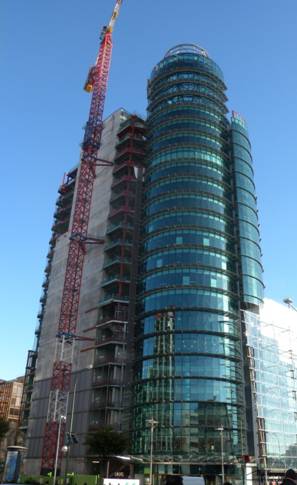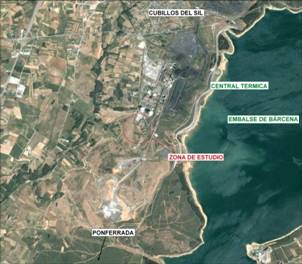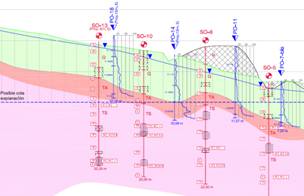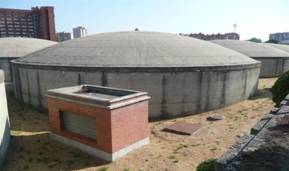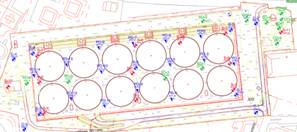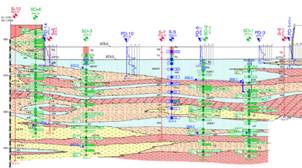Geotechnical studies within Detailed Designs are the most common works for a Geotechnical Consulting Company.
The activity of this company does not only focus in this stage. We are normally required to -“go further”- by analyzing construction pathologies and providing Geotechnical Assistance during construction. For this reason, our staff has a broad knowledge of the problems related to geotechnical works. This offers several advantages to:
- Perform ground investigations that takes into account the type of soil and the kind of civil structure that is to be built, focusing in the problems that may arise.
- Diagnose geotechnical problems before they actually happen. This is very beneficial for cost optimization.
We offer our expertise in geotechnical practical applications in order to perform geotechnical studies with a global vision which facilitates the subsequent ground investigation process.
Our global vision makes us different. Up to some extent we could be compared with a good doctor who, by requesting the right tests, is able to prevent and cure a health problem through the correct diagnosis.
Some type examples of our geotechnical studies can be seen in the forthcoming lines:
-
Geotechnical studies on high-speed railway line sections. Client: ADIF (Spanish high-speed railway administrator).
- Geotechnical studies on building construction. Clients: Architecture or Engineering studios.
- Special Geotechnical studies. For instance steam power plant extensions (Client: ENDESA), wind farms (Client: Iberinco),desalination plants, wastewater treatment plants, water deposits, etc.
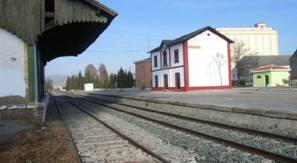
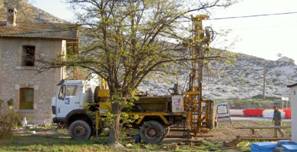
|
Geological-Geotechnical study on the high-speed rail line between Bobadilla and Granada. Section: Pinos Puente – Granada.
Client: ADIF
High-speed rail lines.
The studied section had an approximate length of 14 km. The route was constituted by low fills and cuts (2 to 3 m), 13 overpasses, one bridge, 3 underpasses and one culvert.
An extensive ground investigation program was necesary to study the route. It consisted or boreholes, trial pits, dynamic penetration tests and seismic profiles.
The aforementioned route was located over cohesive Quaternary deposits from Granada’s higher and lower lowlands.
|
|
Geological-Geotechnical study on the extension project of a shopping center in Azca, Madrid (At Windsor building's previous location).
Client: El Corte Inglés
Building Construction: Shopping Centers.
The extension of El Corte Inglés´ shopping center over an area previously occupied by the car park was studied in this report. The reconstruction of a new building in the area previously occupied by the Windsor building was also studied. This study was performed during the building’s demolition works.
The newly designed buildings transmitted loads higher than the ones of the previous buildings. The Windsor building was founded over a thick concrete slab, and the rest of the buildings were founded over footings.
The soil ranged from the sandy clays to the clayey sands typical in this area of Madrid.
The ground investigation performed consisted of boreholes drilled from the lower car park floor.
The study concluded that it was possible to use the existent concrete slab and footing loading it to 600 kPa without need for any underpinning.
The footings were structurally reinforced.
|
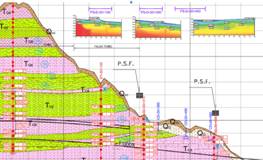
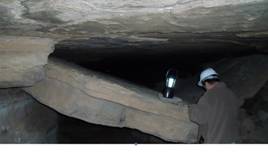
|
Geological-Geotechnical study on the high-speed rail line between Burgos and Vitoria. Section: Prádanos de Bureba – Pancorbo
Client: ADIF
High-speed rail lines.
The studied section had an approximate length of 25 km. The route was constituted by cuts of up to 40 m of height and fills of up to 15 m of height. The route had 8 bridges, 6 overpasses, 9 underpasses and a 1.2 km long tunnel.
An extensive ground investigation composed by boreholes, trial pits, dynamic penetration tests, static penetration tests and seismic profiles was necessary to study the route.
The high speed rail line is located over detritic-evaporitic Miocene Tertiary materials underlying several types of Quaternary materials (alluvial, colluvial, etc.).
The most relevant aspects of this report were the potential instabilities of the tunnel and the correct characterization of some heterogeneous lithologies.
|
|
Geological-Geotechnical Study on the location for project OXY-300 CFB for CO2 capture and storage, located at the steam power plant “Compostilla II”. Cubillos del Sil. León.
Client: ENDESA
Building projects: Steam power plants.
The forthcoming table shows all the different facilities that were built:

An extensive ground investigation composed by boreholes, pit holes, dynamic penetration tests and resistivity and down-hole geophysical tests was necessary.
The ground profile was constituted by a very hard Tertiary material overlain by a few meters of altered Tertiary and Quaternary materials.
Due to the good quality of the soil, the buildings were founded through means of either footings or concrete slabs.
|
|
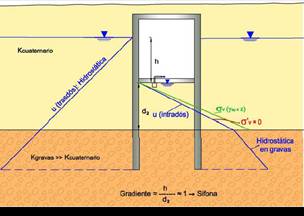
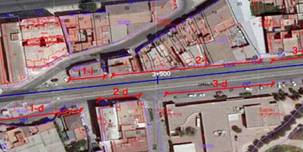
|
Geological-Geotechnical study on the Main Railway Network of the city of Murcia
Client: ADIF
High-speed railways
The route had an approximate length of 8 km and partly run through a cut-and-cover tunnel. The construction of a new train station was also considered.
An extensive ground investigation composed by boreholes, pit holes, dynamic penetration tests, static penetration tests and seismic profiles was necessary.
The most relevant aspects of this report were:
- The soft soils and high water table.
- High seismicity of the area.
- Buildings close to the earth retaining structures used for the cut-and-cover tunnel.
|
|
|
Geotechnical study on the foundation of Valleca’s deposit
Client: UTE VIAS – COBRA
Building construction: Hydraulic works facilities
This report dealt with the revision of the geotechnical conditions and the construction of the “Canal de Isabel II” Valleca’s new deposit.
An extensive documentation analysis was necessary. Moreover a ground investigation through means of boreholes, pit holes and laboratory tests was carried out.
The report focused in defining the potential for the expansivity of the soil, to investigate whether that was the cause of the different construction pathologies observed in the previous deposits (which had to be demolished). The aim of this report was to define the most adequate foundation technique for the new deposit. The deposits were finally founded through means of a concrete slab due to the low expansivity of the soil at the anticipated concrete slab elevation.
|
|


